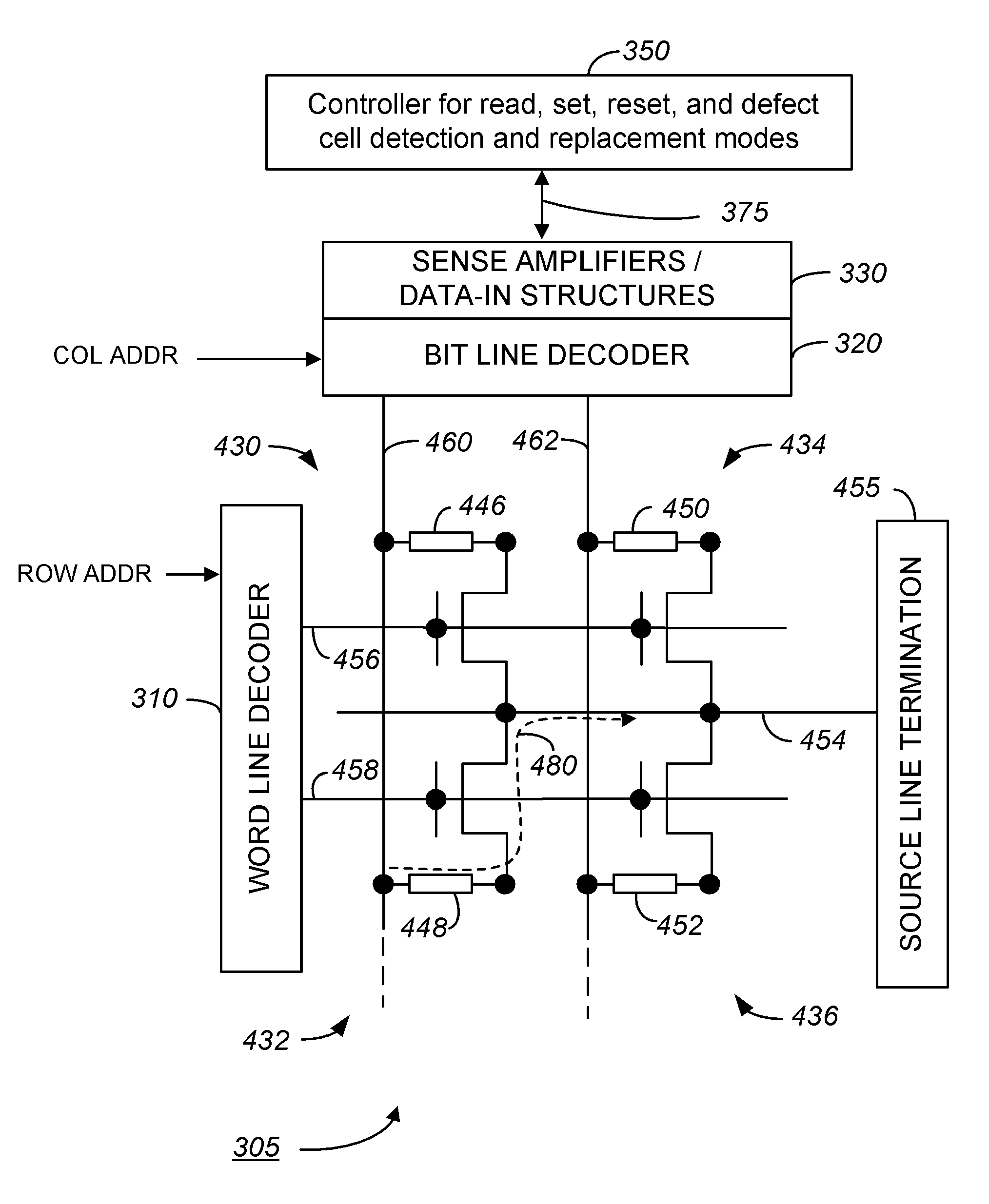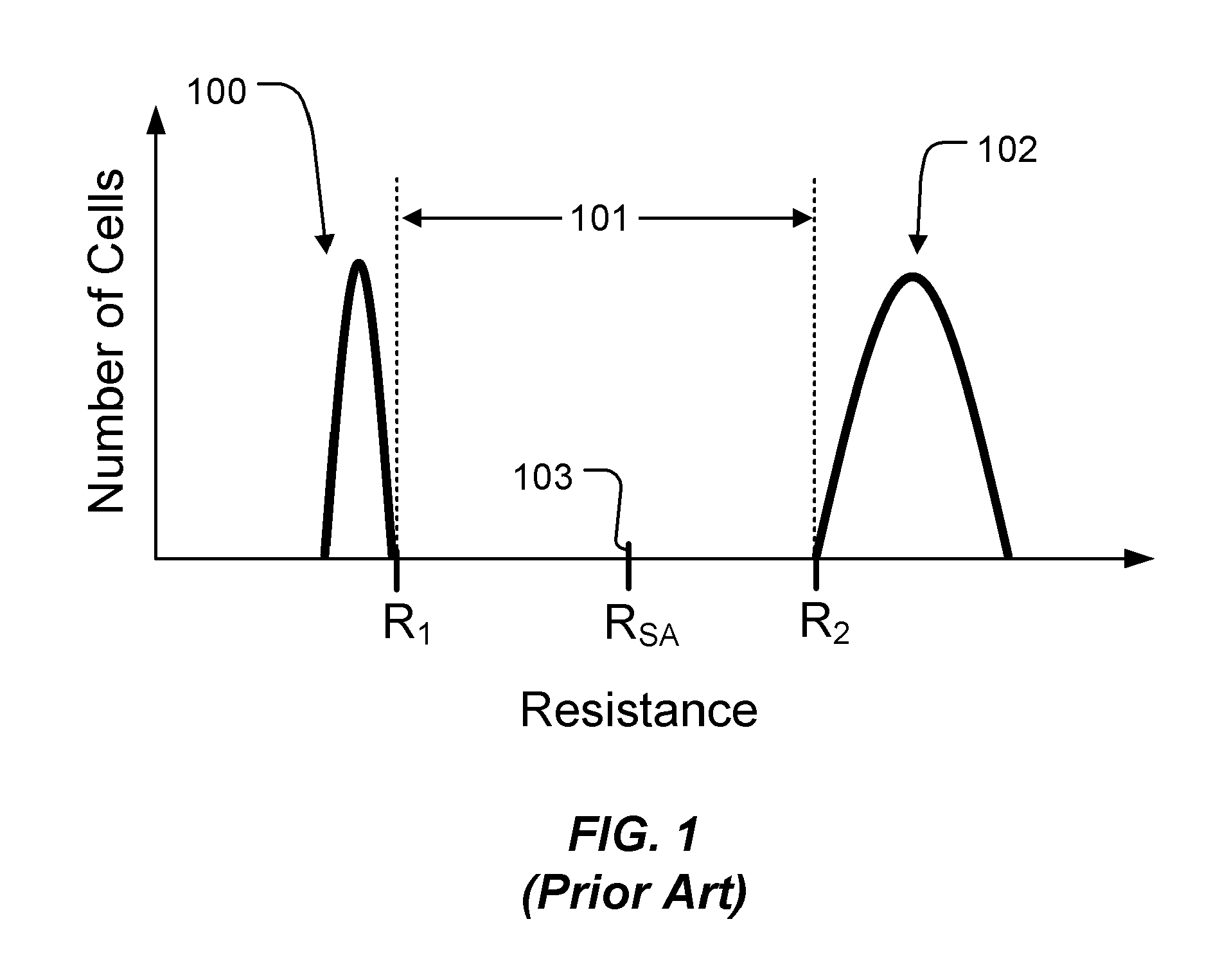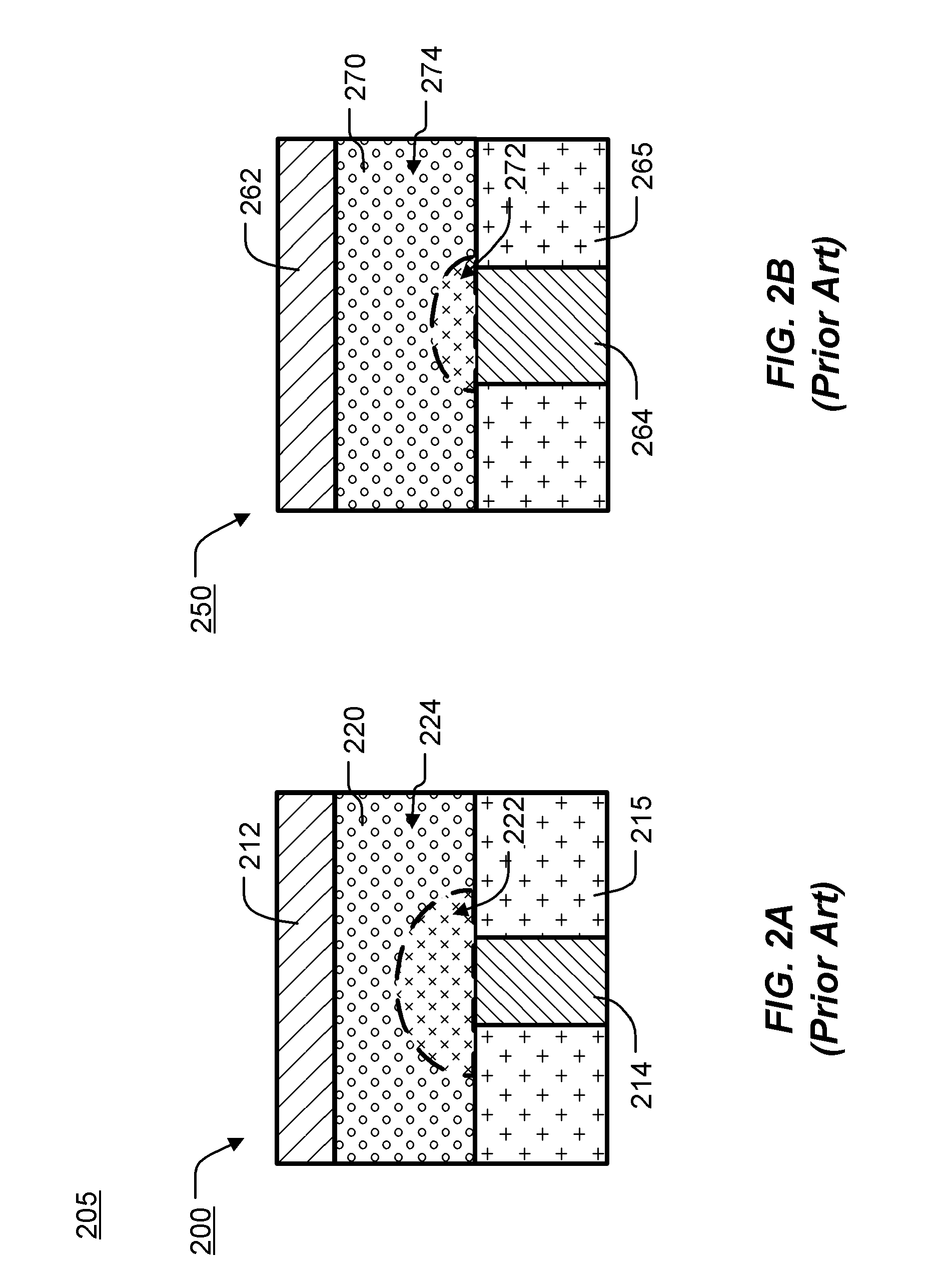Methods and apparatus for reducing defect bits in phase change memory
a phase change memory and defect bit technology, applied in the field of memory devices, can solve the problems of bit errors, rapid decrease in resistance, bit errors, etc., and achieve the effects of high resistance reset state, high current, and increased amount of amorphous phase materials
- Summary
- Abstract
- Description
- Claims
- Application Information
AI Technical Summary
Benefits of technology
Problems solved by technology
Method used
Image
Examples
Embodiment Construction
[0038]A detailed description of embodiments of the present invention is provided with reference to the FIGS. 2A-2B to 14A-14C.
[0039]FIGS. 2A-2B illustrates cross-sectional views of two prior art “mushroom type” memory cells 200, 250 in an array 205 that can include millions of memory cells. The first memory cell 200 includes a bottom electrode 214 extending through dielectric 215, a memory element 220 comprising a phase change material, and a top electrode 212 on the memory element 224. The bottom electrode 224 is coupled to a terminal of an access device (not shown) such as a diode or transistor, while the top electrode 212 is coupled to a bit line or can be part of a bit line. The bottom electrode 214 has a width less than the width of the top electrode 212 and memory element 220, establishing a small contact area between the memory element 220 and the bottom electrode 214 and a relatively large contact area between the memory element 220 and the top electrode 212.
[0040]In operati...
PUM
 Login to View More
Login to View More Abstract
Description
Claims
Application Information
 Login to View More
Login to View More - R&D
- Intellectual Property
- Life Sciences
- Materials
- Tech Scout
- Unparalleled Data Quality
- Higher Quality Content
- 60% Fewer Hallucinations
Browse by: Latest US Patents, China's latest patents, Technical Efficacy Thesaurus, Application Domain, Technology Topic, Popular Technical Reports.
© 2025 PatSnap. All rights reserved.Legal|Privacy policy|Modern Slavery Act Transparency Statement|Sitemap|About US| Contact US: help@patsnap.com



